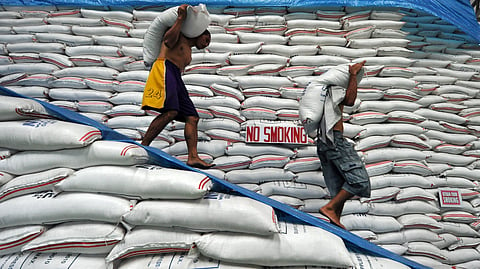
- HEADLINES
- NEWS
- PAGE THREE
- COMMENTARY
- BUSINESS
- LIFE
- ACTION
- GLOBAL GOALS
- SNAPS
- DYARYO TIRADA
- AIF
- MORE

The Department of Agriculture (DA) on Sunday said it supported the move of Speaker Martin Romualdez to amend the Rice Tariffication Law (RTL) to allow the National Food Authority (NFA) to sell rice in the markets.
"We support this initiative of the House of Representatives, especially our Speaker. It is important that we will have intervention when the retail price of rice is too high. We have seen the government's lack of response to situations when the price of rice gets really high," DA Assistant Secretary and spokesman Arnel de Mesa said during in a radio program.
De Mesa said that under Section 10 of the Price Act, the DA is empowered to intervene to address high retail prices of agricultural products.
DA's latest data, the price of local regular milled rice was P50 per kilo, and P48 to P55 per kilo for local well-milled rice.
As for imported commercial rice, the regular milled rice was priced at P48 to P51 per kilo, while well-milled rice was at P51 to P54.
De Mesa however said selling rice at P25 per kilo will depend if the cost to produce rice still decreases.
De Mesa said that while the prevailing price is at P50 per kilo, they suggested the NFA should sell it around P40 per kilo.
"The selling price should not be too low, like around P25 per kilo because the NFA will lose too much. That is also one of the reasons why the RTL was passed because the NFA incurred too much loss," he explained.
De Mesa said that the DA is also studying the possibility of implementing anew the labeling of rice in commercial outlets, making it mandatory for retailers to inform consumers whether the staple food being sold are imported or locally produced.
RTL allows unlimited entry of imported rice in the country, a measure envisioned to bring down the prices of rice due to a larger supply.
Likewise, the same law bans the NFA from buying and selling rice and limits its mandate to managing buffer rice stocks.
These provisions were envisioned to bring down rice prices due to increased supply, but rice prices have continued to increase in six years since the law was enacted.
The latest government data shows the rice inflation rate going up to 24.4 percent in March compared with 23.7 percent in February.
"That's the only issue why rice is so expensive. Compared to other countries, the Philippines' cost to produce rice is still expensive and our post-harvest losses are still high," the DA official explained.
